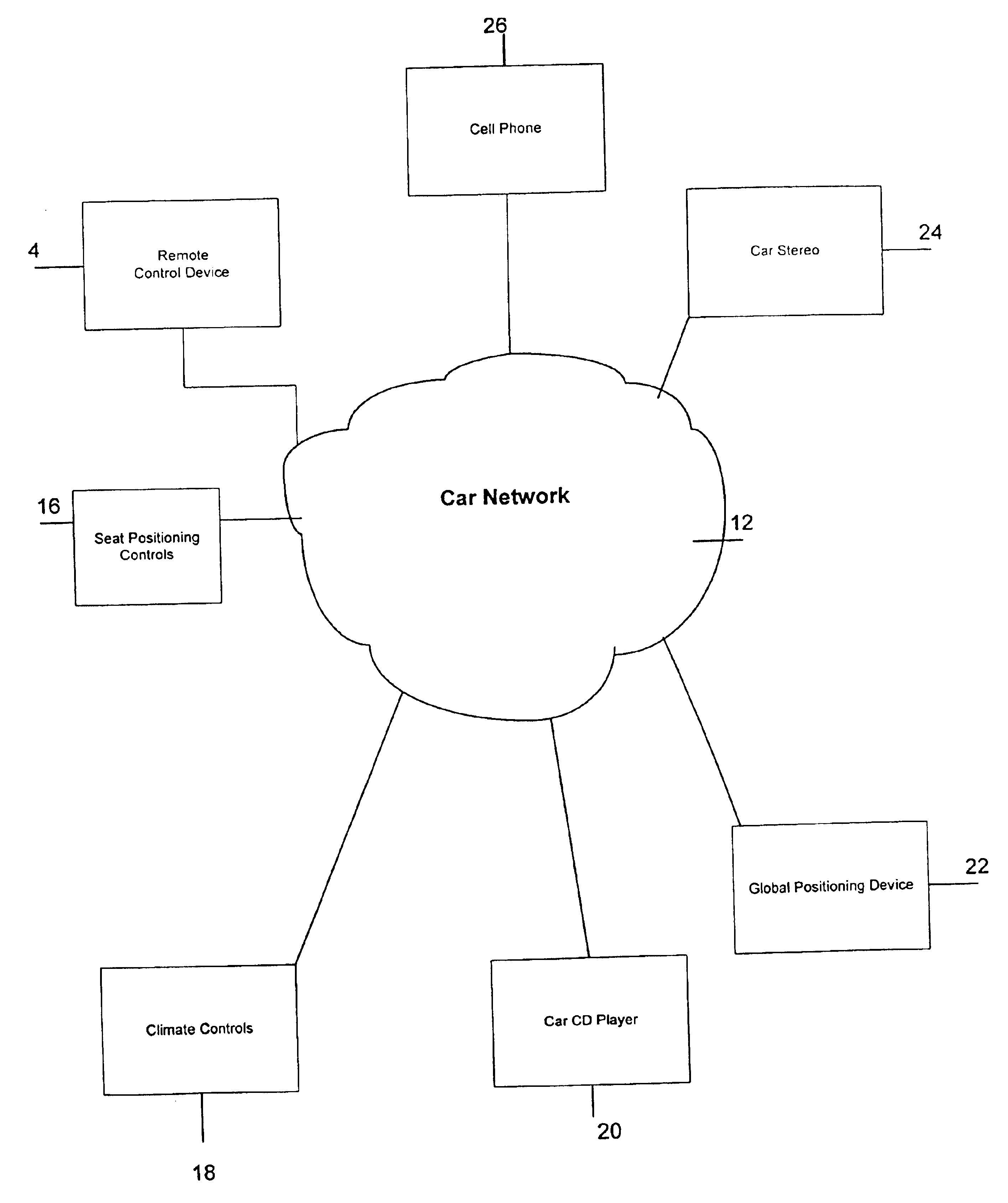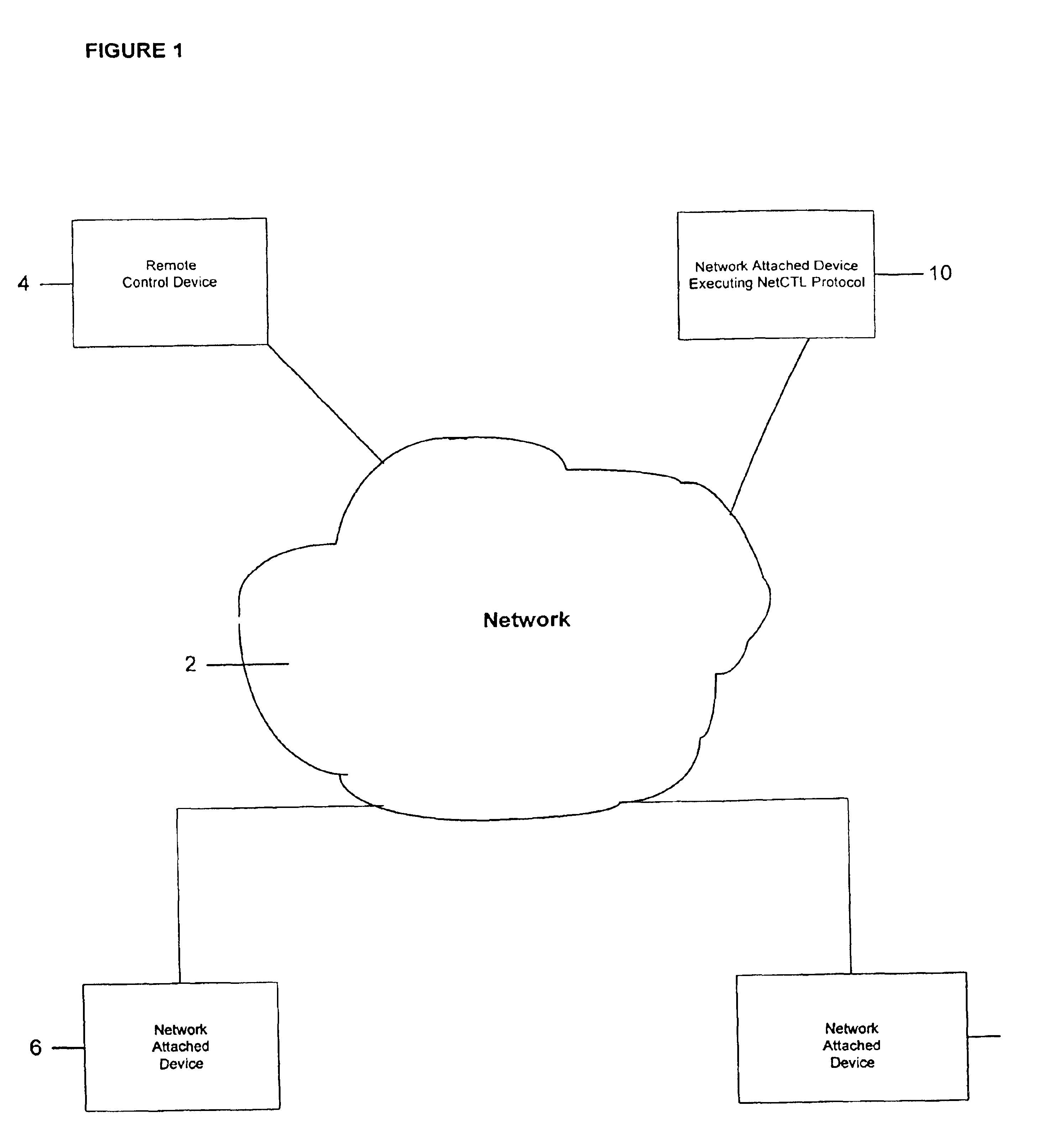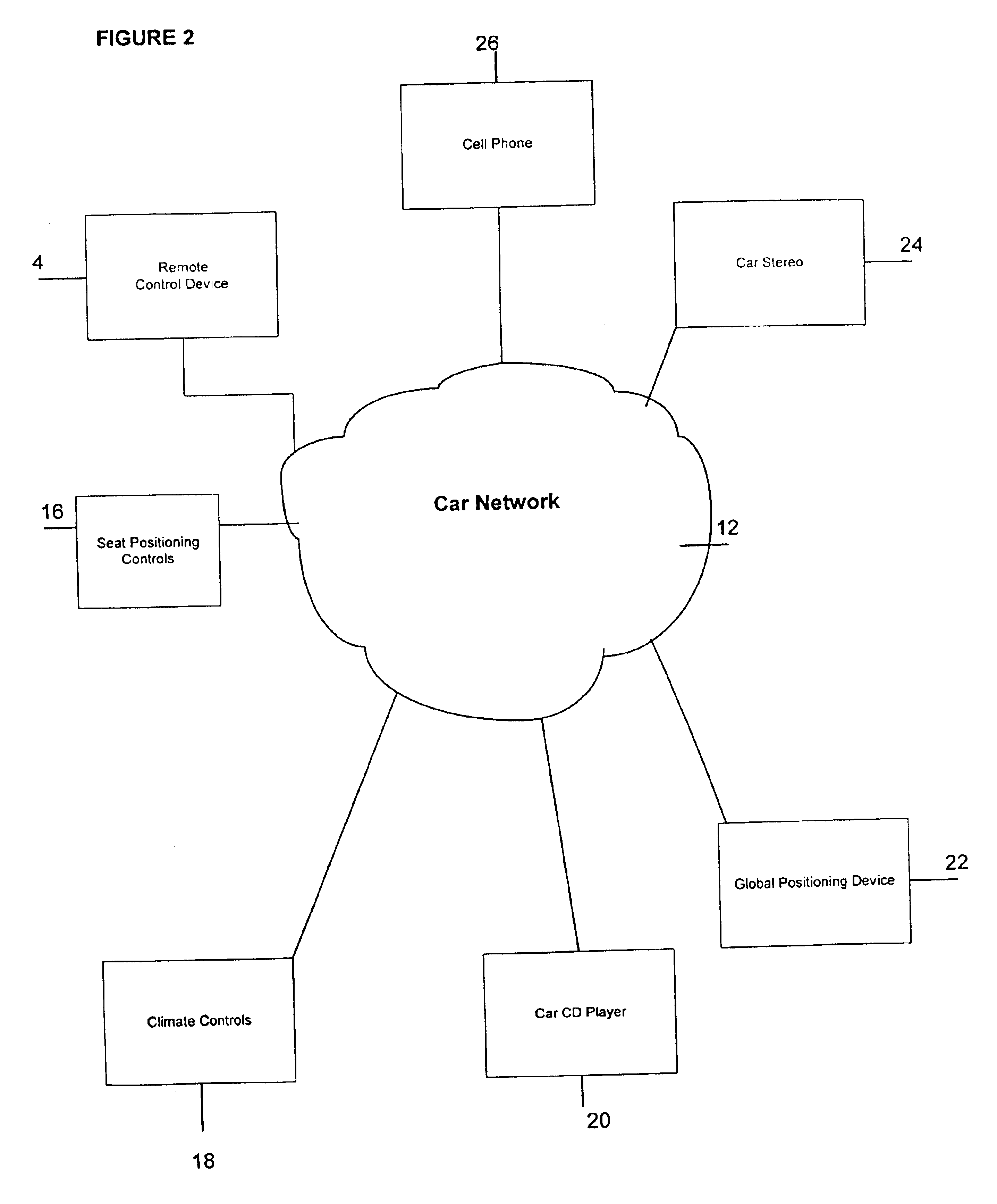Protocol for a remote control device to enable control of network attached devices
a remote control device and network technology, applied in the field of remote control devices to enable the control of network attached devices, can solve the problems of restricted types of devices capable of being controlled by a remote, and the inability to readily accommodate new devices in the field of approach
- Summary
- Abstract
- Description
- Claims
- Application Information
AI Technical Summary
Benefits of technology
Problems solved by technology
Method used
Image
Examples
Embodiment Construction
The illustrative embodiment of the present invention employs a protocol (i.e. the NetCTL protocol) that facilitates a remote control device locating other network attached devices. The protocol also enables the remote control device to dynamically learn command codes for network attached devices a nd then use those command codes to control the network attached devices. The set of device types that can be controlled by the remote control device is not statically fixed and is limited only by the number of devices on the network executing the protocol and hardware limitations of the remote control device.
The protocol is designed to be used in a network, such as a computer network that supports the TCP / IP protocol suite. Because protocol communications are carried over the network, there is no need for the remote control device to be in physical proximity or “line of sight” with the controlled device. In fact, the remote control device's network interface can be either a physical interf...
PUM
 Login to View More
Login to View More Abstract
Description
Claims
Application Information
 Login to View More
Login to View More - R&D
- Intellectual Property
- Life Sciences
- Materials
- Tech Scout
- Unparalleled Data Quality
- Higher Quality Content
- 60% Fewer Hallucinations
Browse by: Latest US Patents, China's latest patents, Technical Efficacy Thesaurus, Application Domain, Technology Topic, Popular Technical Reports.
© 2025 PatSnap. All rights reserved.Legal|Privacy policy|Modern Slavery Act Transparency Statement|Sitemap|About US| Contact US: help@patsnap.com



